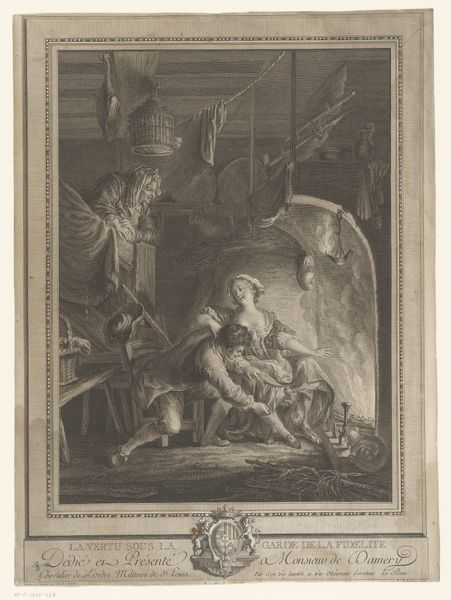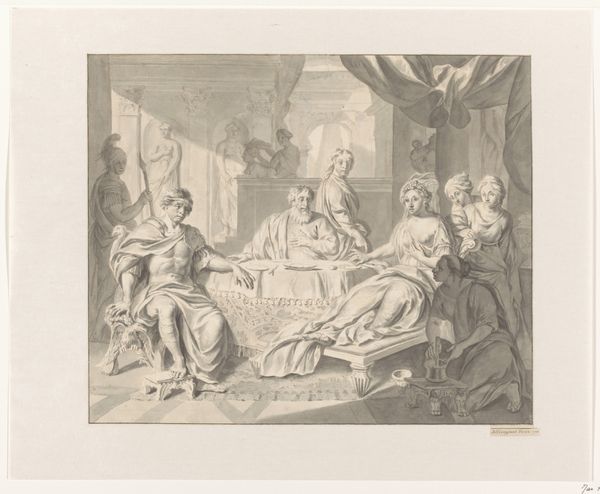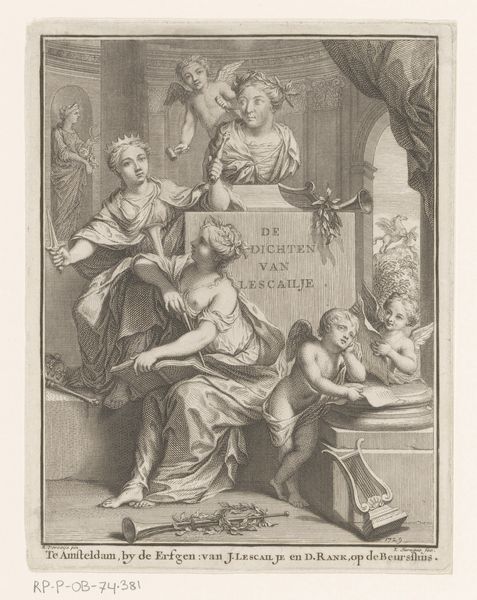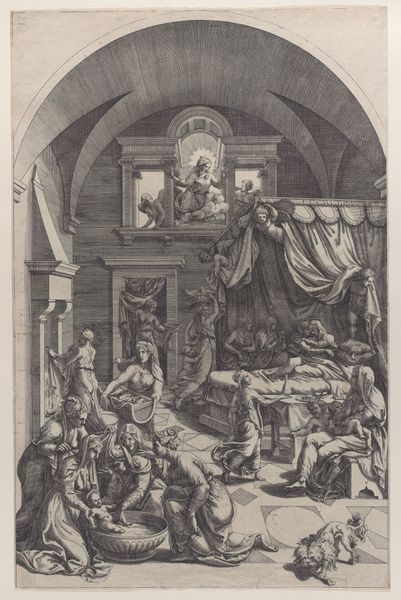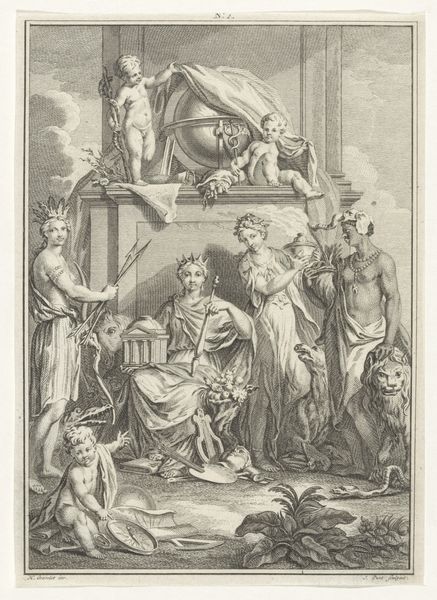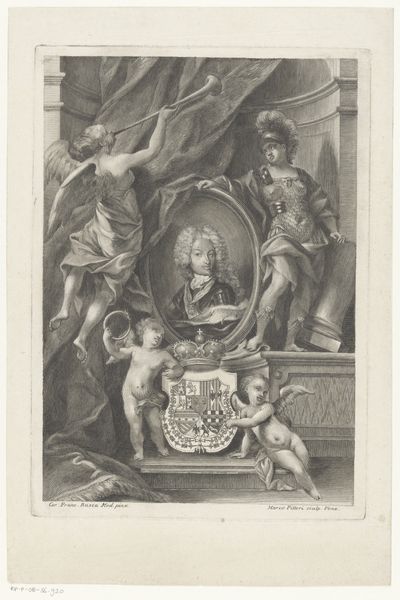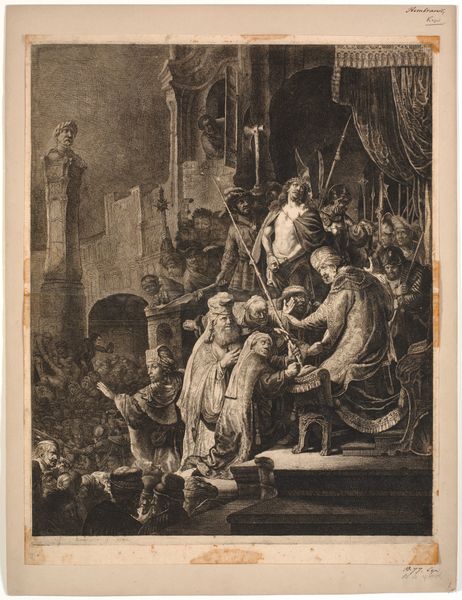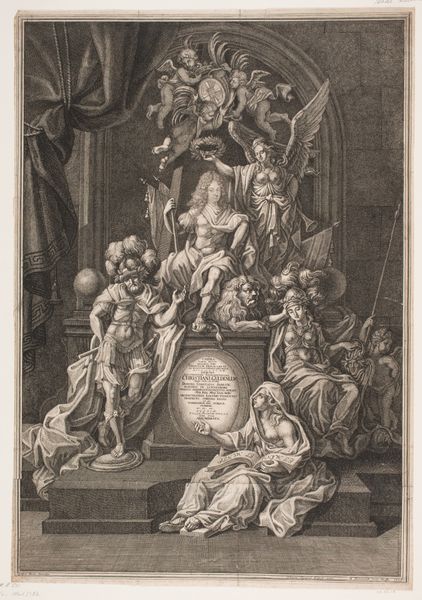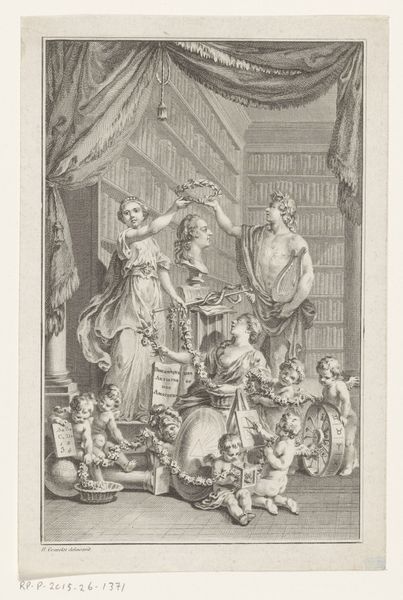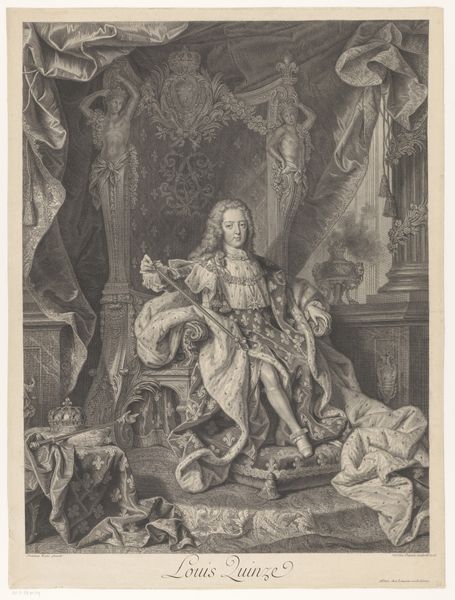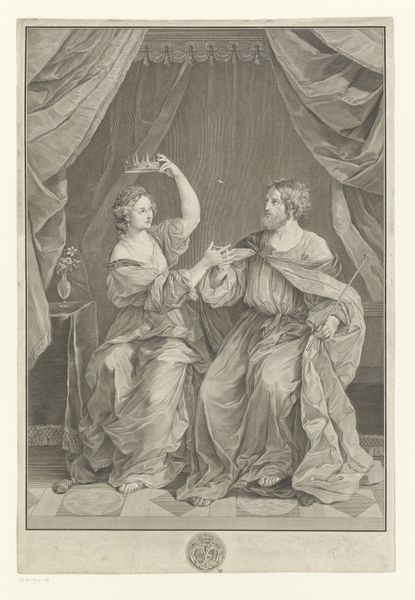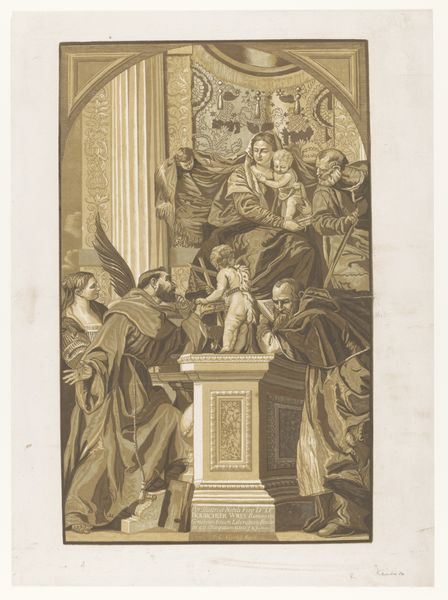
drawing, engraving
#
portrait
#
drawing
#
neoclacissism
#
allegory
#
charcoal drawing
#
charcoal art
#
history-painting
#
engraving
Dimensions: height 534 mm, width 364 mm
Copyright: Rijks Museum: Open Domain
Curator: This is Ignaz Unterberger's "Allegorical Homage to Wenzel Anton von Kaunitz," made around 1790. It's an engraving that feels so monumental in its composition. Editor: My first impression is one of formal austerity. It’s very Neoclassical in its rigid structure and somber tone. All those figures frozen in place! Curator: Let's delve into that structure. You have this imposing bust of Kaunitz, surrounded by allegorical figures – Justice with her scales, Prudence with her mirror… Notice the sphinxes flanking the pedestal too. They are interesting markers of taste here as it also indexes contemporary access to imported antiquities, not only via the visual record, but access to labor practices too. Editor: Absolutely, the symbolic weight is palpable. Each figure acts as a virtue, all clustered around Kaunitz to elevate him as this almost divine statesman. Justice and Prudence are almost cliché here but they also work together as symbols of Kaunitz's time serving as the Imperial Chancellor. What do you see when you look at the engraving closely? Curator: The craftsmanship for one! Look at the sharp details. Engravings like these demanded precise labor, skilled artisans who likely toiled away in workshops translating paintings into prints. And, considering the Neoclassical style’s revival of antiquity, the conditions of the source material become further implicated. Were plaster casts utilized for design, which type of tools would render such smooth stone? And were these tools fashioned, imported, from local artisans? The chain of labor stretches quite far. Editor: Interesting perspective. Beyond the process, consider the symbolic language: The lion represents strength, while the angel overhead heralds Kaunitz's legacy with a trumpet. These aren't accidental details. They construct Kaunitz's public image for posterity, imbuing him with these archetypal qualities. This engraving, with the historical material constraints of disseminating political ideas, offers an important counterpoint to contemporary "viral" internet content. Curator: Indeed. The intended audience would likely be affluent aristocrats who could purchase and appreciate prints like these. But let's consider how such art supported an entire ecosystem of craftspeople and vendors whose daily experience rarely involved nobility. Even the consumption of images reinforces a social hierarchy. Editor: Well, now when I step back to view the whole thing I'm newly aware of the socio-economic context surrounding art's production at that time. Curator: Right! Understanding production alongside iconography gives us a more layered grasp on not just the image, but the structures enabling it.
Comments
No comments
Be the first to comment and join the conversation on the ultimate creative platform.
